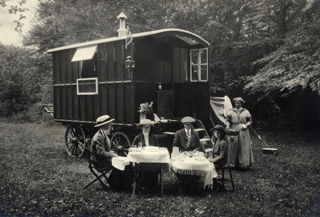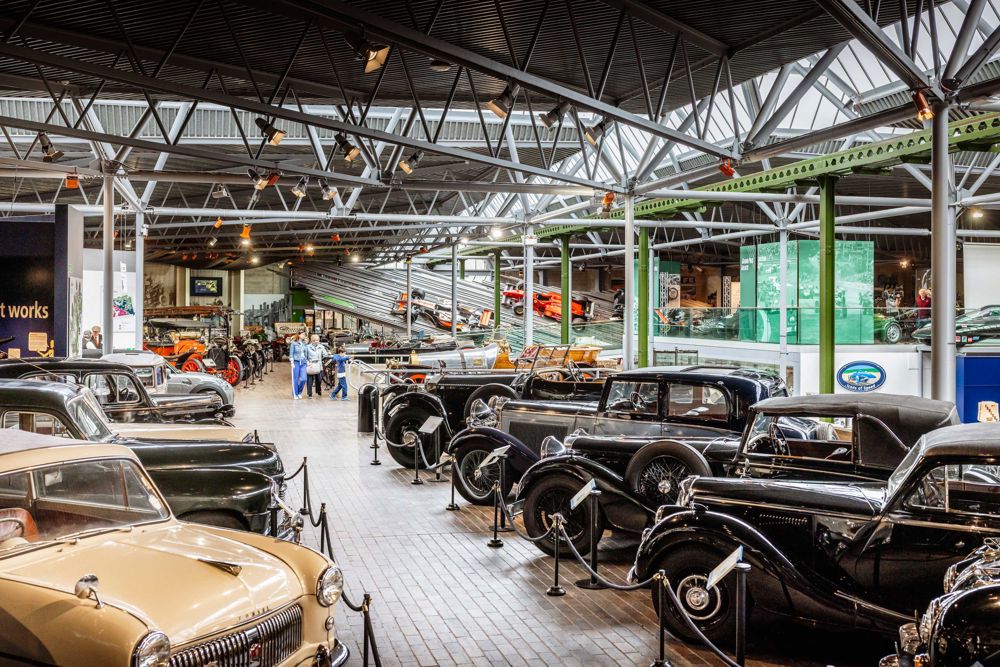
The Women Pioneers of The Caravan Club
05 October 2018
When founded in 1907, The Caravan Club aimed to bring together the growing number of caravan enthusiasts. Unlike the many exclusively male members’ clubs of the Edwardian era, The Caravan Club actively welcomed women who formed around a third of its membership.
Meet some of these pioneering women.
Mrs Edith Dawson
In the early twentieth century the craze for the idyllic pursuit of the horse-drawn caravan holiday was sweeping across the leisured and professional classes of Britain. For many who lived in bustling and industrialised areas, the draw of a relaxing tour through coast and countryside was great. The health benefits of enjoying fresh air was greatly promoted by the Victorians and Edwardians. For many, as it does today, the caravan provided a solution for the perfect escape.
The Caravan Club, as it was then known, was founded by a group of eleven enthusiasts on 14th June 1907, headed by writer and barrister J Harris Stone. The organisation welcomed both men and women to its membership, with many unmarried women filling its ranks, casting aside the social conventions of the previous generations and enjoying a new found independence. Writing in 1914, J Harris Stone observed the social change which was enjoyed by women of this generation:
‘Taxis are used by women, equally with men […] young women live in flats like bachelors; and ladies’ clubs unknown when Victoria ascended the throne, are common. The climax, in the eyes of the old-fashioned and censorious, has come – women actually go on caravan tours!’
Among the group of eleven founders of the organisation was Mrs Edith Dawson (née Robinson) who alongside her husband (and fellow founding Club member) Nelson Dawson were central figures in the Arts & Crafts movement. The couple were particularly well known for enamelled jewellery which, true to the ethos of Arts & Crafts, revived historic and often forgotten skills and techniques to produce their artworks. The similarities in the Dawson’s approach to art and their interest in caravanning are striking, with both movements promoting a return to a simple approach as a direct reaction to increased industrialisation. Sadly nothing is documented of Mrs Dawson’s caravanning exploits, and her involvement with the Club appears to be short lived after disagreements which arose over the running of the newly formed organisation. However, she can certainly be credited as the first female member of the Club.

Growth in female membership
Other women were quick to follow, by 1912 membership had risen to 267, nearly a third of which were women. Uncounted in the Club’s list of members are the numerous women who enjoyed the hobby equally with their member husbands. Caravanning was a pursuit enjoyed by many married couples, where traditionally leisure pursuits were often split between the sexes and undertaken separately. One Club member Mr Johnston Green commented how: ‘My wife and I and a maid lived in it for four months last summer (1912), and were most comfortable, having almost every convenience that one gets in a good house.’

A large proportion of female members also used the hobby as an opportunity to spend time with friends. For many years the committee was served by Miss Grace Simmons, well known for travelling with a party of two other friends. They used caravanning as a means of enjoying outdoor pursuits such as hunting, shooting and fishing, which for the previous generation were largely the preserve of men. Yet women who travelled solo often employed a male servant to tend to the horses, although this was not always the case with J Harris Stone noting in 1914 that ‘I know a mother and her two daughters who “van” alone, without even a servant to look after their two horses.’
Harris Stone also wrote of one young unnamed lady member who travelled through England and Wales entirely alone with a donkey and cart. Partially paralysed and of a delicate constitution she was advised to spend more time in the open air, and took to the road in the hope that this would have benefits on her health. She wrote to Harris Stone often with tales of her independent travels, living as simply as she could and buying all her supplies from farms.
At the more luxurious end of the caravanning scale, a new breed of caravanner was emerging on British roads in the years before the First World War. The pioneer motor caravanners were a group who embraced new developments in automobile technology and travelled in bulky and often cumbersome ancestors of the motorhome. Mrs Madge Paton of Dundee was one such pioneer who combined caravanning with motoring. She toured the roads in her large motor caravan named The Tortoise, employing a coachman to do the driving.
From its earliest days The Caravan Club attracted independent and adventurous women into its ranks. Artists, students, campaigners and Suffragettes were all among the women who enjoyed the freedom of the road.


Subscribe for updates
Get our latest news and events straight to your inbox.